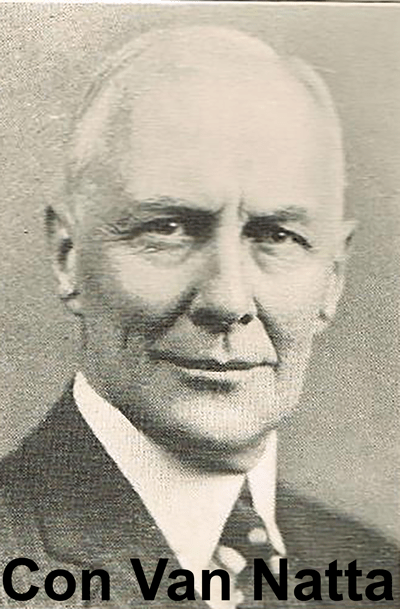Con Van Natta (1924)
Disclaimer: The following was transcribed from an article in the Capper Foundation Archives published by the Topeka State Journal. The choice of words used at the time this was written may not reflect current Capper Foundation inclusive language and views.
This article was written by Conrad Van Natta, Administrator of the Capper Fund for Crippled Children, Arthur Capper’s Composing room Foreman at The Topeka State Journal, and the father of a child with polio. Con Van Natta took part in Arthur Capper’s first initiative to help children with disabilities, starting in 1920. That eventually blossomed into what is now our very own Capper Foundation.
Senator Capper’s Children (1924)
by Con Van Natta
The Capper Fund for Crippled Children has long ceased to be an experiment—it has passed the bornin’ period and entered a stage of well-defined service and its perpetuity is assured. Its growth has been phenomenal, surpassing our most hopeful expectations.

It was 25 years ago last Christmas that Arthur Capper gave me my first assignment to “help or make happier the lives of little children.” That assignment has never been rescinded. The work has continued, not always with the same end in view. The cost in time and money and energy has been considerable. I have spent thousands of dollars and much time away from my work here in the capper plant, but he has never complained, never criticized or found fault except one. It was after I had told him of a little crippled girl, on her way with her poor mother and myself to the great hospital. The child put her baby arms around my neck and with all the love and confidence of childhood, though she had never seen me before, and [mistakenly] said: “I know you—you are Mr. Capper; I love you and mamma loves you, because … because you are going to make me walk someday.”
The eyes of the Senator moistened as he listened. Then almost as if I had been remiss, he said: “Let nothing interfere with your work for these unfortunate children; spend twice as much next year, keep in touch with me at Washington. I shall never be too busy to note your progress and your needs.” He never has. The great surgeons at the big hospital are slowly changing this child’s little body and someday God will make her walk.
The Capper Fund for Crippled Children has grown from its inception at Christmas time 1920, when it sent little Rose, our first patient, to the big doctor, to hundreds of little patients and thousands of contributors. It works with, and is glad to cooperate to the extent of its ability with anyone, or any organization, in what we have come to know is the world’s most satisfying endeavor. To be a crippled child is pitiful, but to be a crippled child and poor is a tragedy.
At first, Mr. Capper desired to provide all the money for this purpose himself. He was much averse to my asking for outside help. It was no easy matter for me to persuade him that because of the hundreds of applications and the tremendous need, no one man could carry the financial load. There are more than 400,000 crippled children in America who need help. I showed him the tragic letters I had received. That settled it. “If there are so many crippled children,” he said, “there certainly is work for us all. You may give others the opportunity to help, if they wish to. It was a great day for humanity when he gave me that permission. The response had been fine. Children are going to and leaving the hospital every month. Any case in which there is a reasonable chance is taken. Some cases require the surgeon’s oversight for a long time after treatment.
With no children of his very own, the strongest of human passions found in Senator Capper a desire to feel the joys of paternity through helping the children of others—to do for them as he would have done for his own. And as the children of the poor usually are the ones in greatest need of a friend, he turned to them. In his work for crippled children, race, creed or color do not matter, there is no discrimination—a crippled child is a crippled child; that is all that counts.
For many years every Christmas morning, Mr. Capper—he wasn’t a senator then—sent his motor car loaded with candy and toys to the children of Topeka that were likely to be forgotten by Santa Claus. It was my privilege to go with that car. Year after year I had come to know of children in wheeled chairs or on crutches, that watched with their little noses flattened against the window pane for the coming of their only Santa. I told this good man the pathetic story of this experience. His face took on the serious, though kindly, expression that precedes his deep interest. “I want to do something more than give those crippled children toys and candy,” he said. Get the best surgeons you can find and the best hospital. Go to the office for the money you need. I shall expect you to begin at once.”
That was all, but it was enough. And that is how the Capper Fund for Crippled Children was born and developed into what it now is, by virtue of which many a child has been given its birthright, something approximating a sound body.

